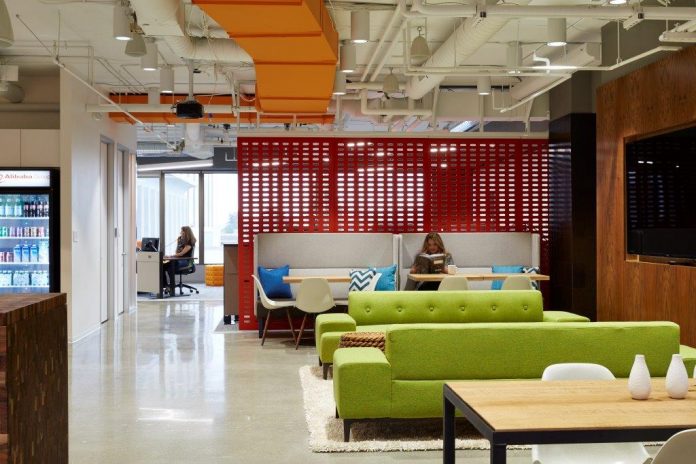
As the Open Office Debate Intensifies, It’s Time to Reach Common Ground
By Robin Weckesser, President, a3 Workplace Strategies
Recent studies have workplaces stirring again about an ongoing, controversial topic: Open or closed offices? What works best? Well, we think it’s time to revisit what we’ve been saying for years: One size doesn’t fit all, and it’s not an open or shut proposition. Rather, it begs the need for the right balance and fit.
Let’s look at the most recent buzz:
- A Harvard Business Review study focused on the unintended negative effects of an open environment. According to this research, open offices reduce space and costs, but they don’t seem to improve interaction and performance. Rather, with poor acoustics and cramped space that compromises creativity, they can be disruptive
- A follow-up piece in Fast Magazine pointed to a key flaw in the Harvard study: It looked only at extreme open office configurations without factoring the effect of private areas as well.
- In addition, Commercial Property Executive published an article advocating the “neighborhood” design concept that calls for offices that are open but zoned, allowing for some degree of privacy.
In the future, because the stakes are so high, new studies and perspectives will emerge, with conflicting conclusions. If you’re a space occupier, broker, developer, architect, or related vendor, it’s understandable if you’re confused.
In evaluating next steps, we encourage you to do your due diligence, consider objective data, and find solutions for your unique environment, partnering with the most qualified workplace project consultants.
A Question of Balance
Once again, it’s all about finding common ground and the need to examine a spectrum of choices that will lead us to the right solution. For instance:
- What is the industry? While tech companies often thrive in an open environment, law firms, financial institutions and ad agencies typically demand more privacy.
- What does the company’s decision-making model look like? Every company has a different approach to decision making. Understanding that style will enhance project delivery from concept through day one.
- What about culture and demographics? Is the workplace comprised of mostly tech-savvy Gen Z and Millennials who are usually more adaptable to open environments? What about the needs of senior executives who may feel entitled and threatened?
- What about a mobile workforce? While more employees are working remotely, they still need to be accountable and periodically return to home base for face-time.
- How to deal with pushback? Make sure change management (education and training) are part of your plan.
- What is the growth plan? If recruitment and retention are critical to success, keep in mind that cool, creative space—and modern amenities that promote the “live-work-play” dynamic—are attractive lures for talent. They also promote the corporate brand to the outside world.
Routes to the Finish Line
Most organizations don’t have the requisite in-house resources to manage optimal workplace transformation. So, if outsourcing is a consideration, consider your options:
- Commercial real estate firms may be worth considering, but only if they have a robust, in-house, dedicated project management division. If not, they often partner with a project management firm.
- Architects and general contractors are critical parts of the team, but they aren’t typically positioned to provide an objective, comprehensive approach that involves business alignment, strategic planning, and assurances for optimal, cost-effective solutions. For this reason, these professionals are often subsets of the overall team directed by project managers.
- Experienced, independent project managers can manage office transformation from start to finish, including strategic planning, management of budget and vendors, design, construction, change management and implementation.
Contemporary Project Managers
But how can you find the right project manager?
For many years, project managers have fulfilled a critical role. In addition to overseeing the work of vendors and integrating services with commercial real estate brokers, they were responsible for staffing, budgeting, scheduling and implementation, including IT, AV, security, furniture and relocation management. They needed to be good communicators and get the job done on time and on budget. While these are mission-critical activities, PMs seldom were involved in visioning, strategic planning and product delivery.
But times have changed. Tenants are demanding more modern amenities. And open offices have become the new normal (over 70 percent of offices today are open environments). But while this trend is inexorable, it is fraught with challenges. Today’s workplace often contains five generations working together, including Baby Boomers, Millennials and Gen Z—all of whom have different mindsets and skill sets.
This shift has caused project managers, facility managers, brokers, architects and construction managers to think differently about their roles. Enter the contemporary project manager who has the expertise of a mechanic but also the much broader skills of a holistic engineer. The optimal project manager today understands not only design and construction but also the organization’s culture and branding.
Today’s project managers should have the required background. They should be able to say, “Been there, done that.” In fact, there’s no substitute for having walked in a client’s shoes.
The More Things Change…
One thing that hasn’t changed over the years is the need to cut costs and bolster the bottom-line. Project managers can help in this regard by identifying the value proposition and mapping out routes to the best ROI.
At the end of the day, we need to consider not only what’s trendy, but what’s right. In other words, we’re looking for not just a workplace but a workplace really works! So, don’t overlook the bottom line of cost-savings, but don’t be short-sighted. More than likely, companies will want to review options for open and closed, “hybrid” space that accommodates individual needs but, most importantly, fosters the common good.
Workplaces today are unique environments…and they deserve nothing less than unique solutions.
Robin Weckesser is the president and founder of a3 Workplace Strategies, a workplace consulting group based in San Jose and serving companies throughout the United States and worldwide. The firm provides a full range of project management and facilities management services, including strategic planning, change management, site selection, design, construction, and relocation oversight, space programming, and open office/collaborative environments. For more information, visit a3workplacestrategies.com or email Robin at rweckesser@a3workplace.com.





Sorry, the comment form is closed at this time.